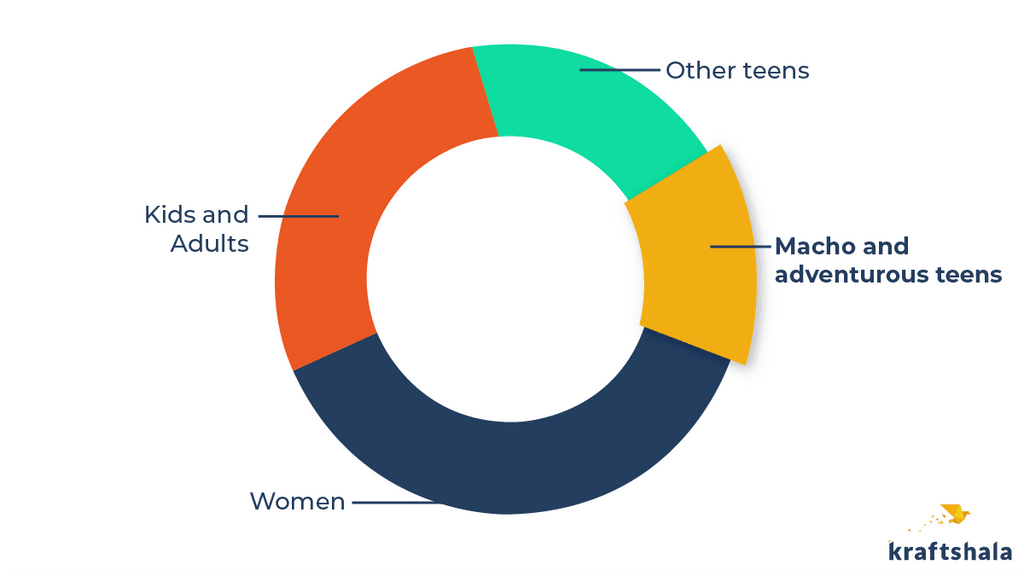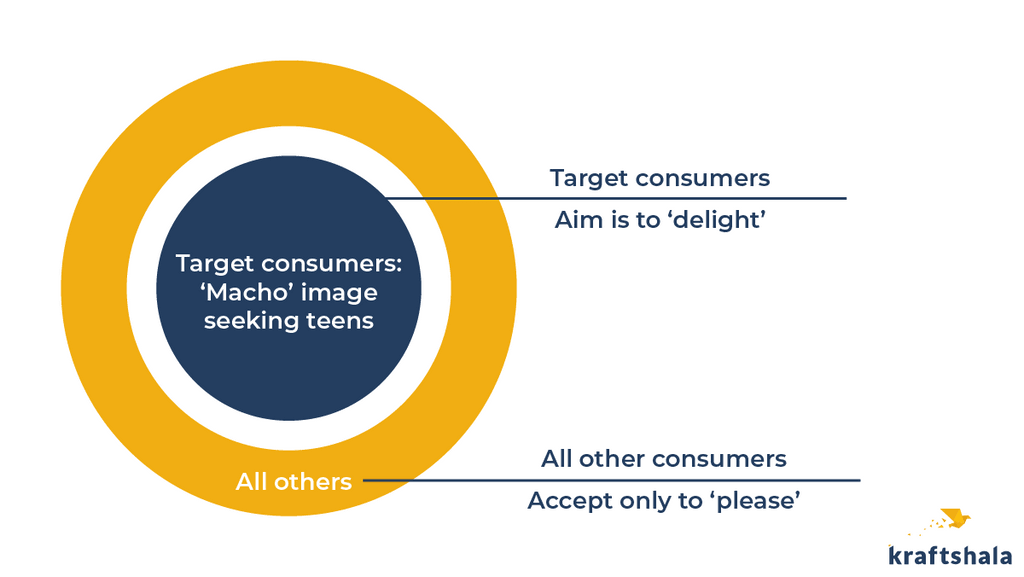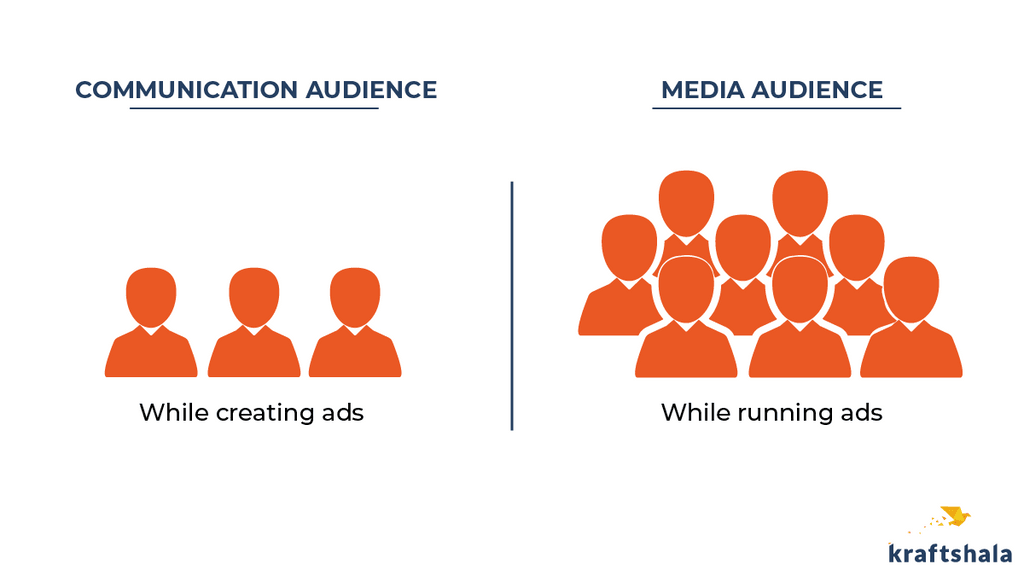Why is Defining a Target Audience Critical for a Brand?
Table of contents
- What is Targeting in Marketing?
- Who is your Target Audience?
- Why is defining a Target Audience critical for a brand?
- Section 1: Is targeting critical for your brand?
- Section 2: How ThumsUp has chosen its target audience?
In our interactions with thousands of marketing aspirants each year, one of the most commonly asked questions is, “Why can’t I go after everyone? What is the point of targeting?”
In this article, we cover everything.
So let us first understand what Targeting is and who a Target Audience is.
What is Targeting in Marketing?
Targeting is a strategy that breaks down a more significant market into smaller segments and focuses on a smaller set of customers (a specific group of consumers) within that audience. It then defines those sets of customers based on a few unique characteristics and concentrates solely on satisfying them. Instead of focussing on an entire market, brands use targeted marketing (or simply targeting) to focus their energy on connecting with a specific group of people within that market. They do that because they know that they can then focus on the smaller group of customers who are most likely to benefit and enjoy their product or service.
Audience Targeting divides the entire leadership audience into groups based on a variety of criteria, including online behavior, demographics, interests, and intent. It is essential because it is part of a holistic marketing strategy. It affects not only advertising but also the customer, brand, and the business experience.
Who is your Target Audience?
Your target audience or consumers can be defined as the specific groups of consumers who would most likely want your product or service and a group of people who should see your advertising campaigns. Your target group may be determined by age, gender, income, location, interests, or a variety of other factors. Defining & identifying your target audience can help you develop your marketing strategy and identify your key customers. Instead of spending money and resources to cater to each customer’s needs separately, you can define your target audience and reach them more personally who would be interested in purchasing a more personalized and targeted product or service.
To identify and select a target market, it is essential for companies to dig deep and note down the following factors:
- Understand the lifestyle of the consumers
- Gender and Age group of the individuals
- Income of the consumers
- Spending habits, online activities and capacity of consumers
- Education Background & Profession
- Mentality and thought process of the consumers
- Social Status and their Likes and Dislikes
- Kind of environment individuals are exposed to
Example of a Target Audience –
A firm wanting to sell soaps with long lasting fragrance and antibacterial properties. Their target audience would include the following –
- Marketing professionals
- Sales Representatives
- People exposed to sun and staying outside for a longer duration
- Individuals travelling by public transport
In this article, we will look into Targeting in detail and cover the following –
- Is targeting critical for your brand? Example of ThumsUp
- How ThumsUp has chosen its target audience?
- What is the difference between communication target audience & media target audience?
Why is defining a Target Audience critical for a brand?
Here is a video which captures the answer to all these questions:
But in case, you’re more the reading kinds, we have summed it up here as well:
Section 1: Is targeting critical for your brand?
We genuinely believe that this is one of the most important realizations that anyone who aspires to be in marketing can have in the initial stage of their infatuation with the subject. Yes, targeting is very vital. To put this in other words, ignoring a large part of your target consumer is critical and is not advisable. Let us take an example of one of the biggest cola brands in India. ‘Thums Up’ is many decades old. Many things have changed, such as their campaigns, brand endorsers, etc., but what has remained unchanged is the Target Audience that their campaigns speak to. This Target Audience is Adventurous and Macho Image Seeking Teenagers. These include those people who are not necessarily adventure-seeking themselves but aspire to have that image. So now let us ask the Million Dollar Question:
What percentage of actual Thums Up customers are adventurous and macho image-seeking teens? Let’s examine this!
Because we are talking about macho image seeking teens, we are only talking about men. So that rules out all the women, which is about 50% of the entire population.
Because we are talking about teens, that rules out both children and adults, which is another
And lastly, among male teens we only want macho image seeking ones, that rules out all the other teens who might be seeking other images for themselves, say the nerds, the romantics, etc. 
What is important to note is that a lot of women consume ‘Thums Up.’ So do a lot of adults and non-macho image-seeking teens. They are all consumers of Thums Up.
Ruling these out would mean that we are left with approximately 15-20% of all the people who consume ‘Thums Up.’
So why does ‘Thums Up’ continue to ignore almost 80% of their consumers in their ads, year after year? That is the now a Billion Dollar Question.
The reason is that when you are up against competitors such as Pepsi, Coke, Sprite, and all of these high spending cola brands, your only chance of survival is when you’re genuinely differentiated as a brand.
And to be differentiated you cannot be all things to all people.
Just think for a while about how you behave with your best friend or with your love interest. What if you start behaving in the exact same way with every person that you meet, would you be able to have a close intimate relationship with your best friend or your love interest anymore? Nope.
In the same way, a brand has to choose who does it want to create a close intimate relationship with. If a brand tries to be for everyone, then it will end up being for no one. That is why a Target Audience exists.
Hence a brand’s optimal strategy should be to choose a set of target consumers, which you can call your Target Audience. A particular group that you’re not only going to attempt to satisfy but go ahead and delight them with your product, your brand, your communication. This same Target Audience dictates even your packaging or the tonality of your social media posts. 
Extra Gyaan: Marketers also create a particular consumer portrait of their Target Audience, which they call the SuperConsumer. This exercise is done by visualizing your Target Audience and giving them a name, an occupation, a face, etc. It helps brands choose Brand Ambassadors and create communication keeping an almost natural person in mind rather than a rough idea of a target audience. The SuperConsumer is often an image of the lead that marketers cast in their advertisements.
Now the rest of your consumers who are still your consumers need to be satisfied as well. In the case of Thums Up, satisfaction could mean offering a good-tasting product at a reasonable price, which is well distributed so that it is within consumers’ reach.
Section 2: How ThumsUp has chosen its target audience?
So the next interesting question that you as a brand need to answer is, which set of consumers are you going to call your SuperConsumers and try to delight? Well that decision is a function of your users, the product you’re selling and the category in which you exist as a brand.*
In the case of Thums Up, since food tastes are developed in the early part of a person’s life, most food brands like Thums Up, need to target either kids or teenagers, or target the parents of these children such that they have an early entry into a person’s life.
Let’s say, a teenager named Kartik who is 15 years old, sees a Thums Up ad, becomes interested in the brand and decides to start consuming Thums Up.
Now 15 years later, Kartik is married and has recently set up his household.
Kartik loves Thums Up but his wife likes to consume another cola brand.
Which brand do you think is going to come into the household?
Are they going to buy both the brands or just one ?

Over time, you can imagine their choices are likely to come down to one specific brand, which will be their most frequently bought brand. And that brand will belong to the person who’s most unreasonably loyal to their own brand choice, who’s intransigent, who refuses to consume any other brand than that of their choosing.
So if Kartik’s love for Thums Up trumps his wife’s love for another brand, over a period of time, you will find that, Thums Up comes more into their household.
Since Thums Up comes more into their household their children are more likely to start consuming Thums Up and that is how the brand will continue to do well.
 That is why expert brand builders launch campaigns; they ignore the more significant chunk of their customers. They don’t want to add up a little bit of delta into their lives. They tend to pick a sharper communication audience and go ahead to delight them with their campaign.
That is why expert brand builders launch campaigns; they ignore the more significant chunk of their customers. They don’t want to add up a little bit of delta into their lives. They tend to pick a sharper communication audience and go ahead to delight them with their campaign.
Section 3: What is the difference between communication target audience & media target audience?
The final point to remember here is the distinction between the communication target audience and the media target audience.
Until now, what we have discussed is essentially the audience you need to keep in mind while creating the ads and other communication, so that your brand has a coherent and consistent voice which really delights that audience. This audience is the Communication Target Audience.
However, when you have created your ad and are now trying to determine who will see your ads through your different media options like TV, radio, Facebook ads, Youtube ads, etc., you go for a much broader targeting. You speak to a much larger group rather than just the 15-20% of your consumer universe.
This is your Media Target Audience.
It is essential that our Media Target Audience is more prominent, and we don’t just show our ads to Macho Image Seeking teens. Otherwise, 30 years old Kartik, who loves Thums Up, might forget to stock his fridge in the summers and be made to settle with another brand. 
Therefore, when you’re defining your media audience on platforms like Facebook, Google, or on the conventional media channels, the media targeting is extensive, and you need to go after large sets of audiences. But when you’re creating an ad campaign, you’re forced to be very selective.
Choosing your Super Consumer is a decision that is so critical for the brand’s future, and is taken after a series of steps called STP (Segmentation, Targeting & Positioning). In this article, we will not go into STP as the objective of this article is not how to find your Target Audience. The aim is to find out why defining a Target Audience is important.
* If you want to learn more about choosing your Target Audience, try considering one of our flagship Marketing program: Marketing Launchpad
This article was conceptualized by Varun Satia , Founder & CEO, and Eshu Sharma , Co-founder & Head of Student Experience, and was edited by Priya Tomar, Content Marketing Intern at Kraftshala.





















